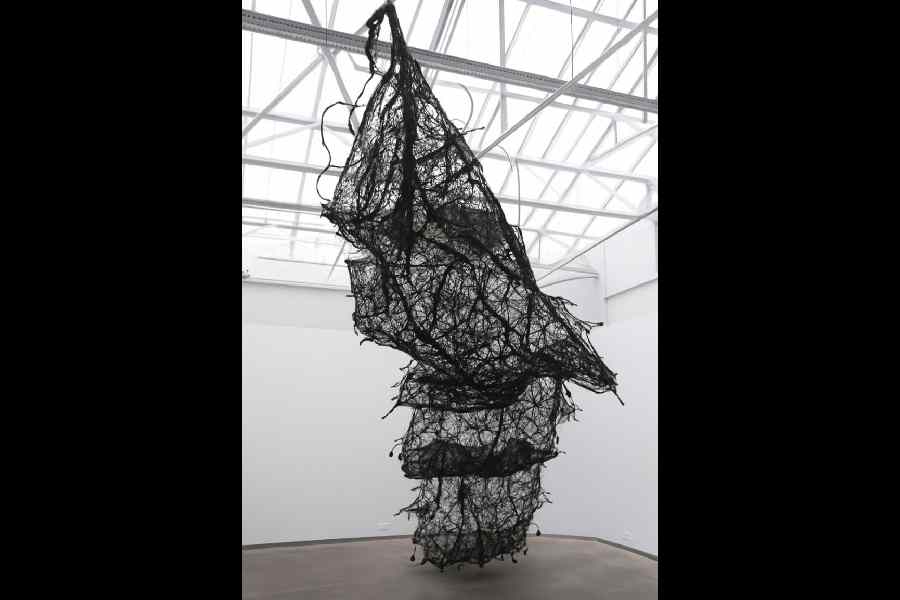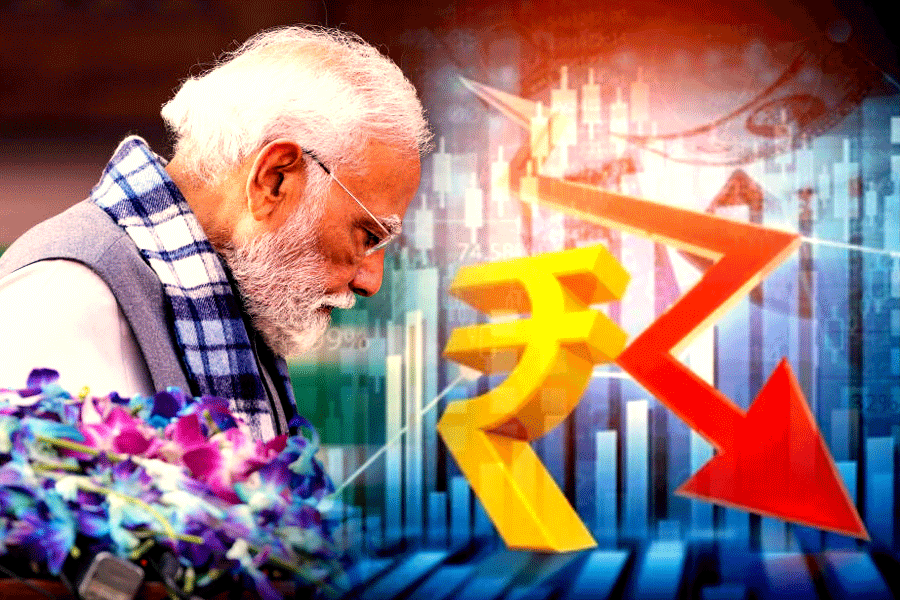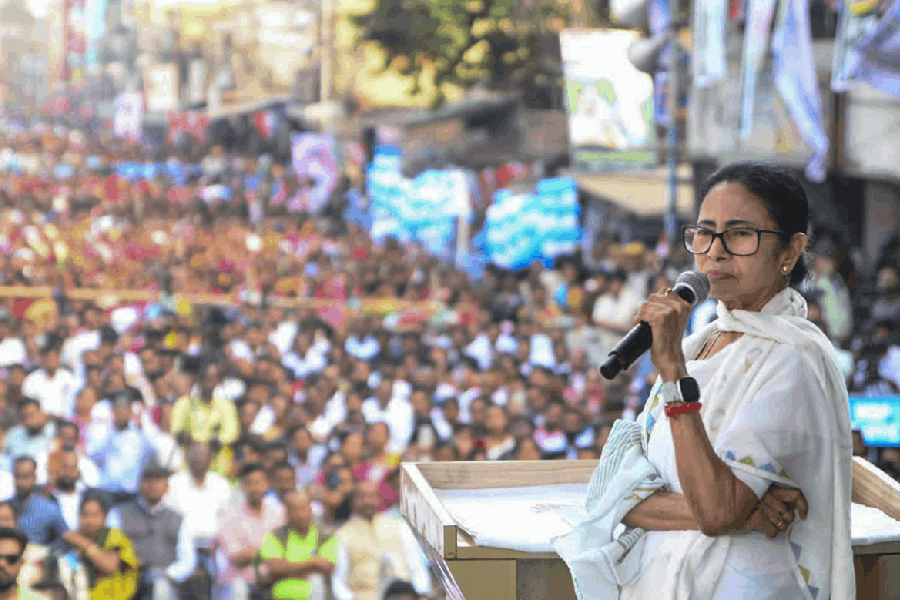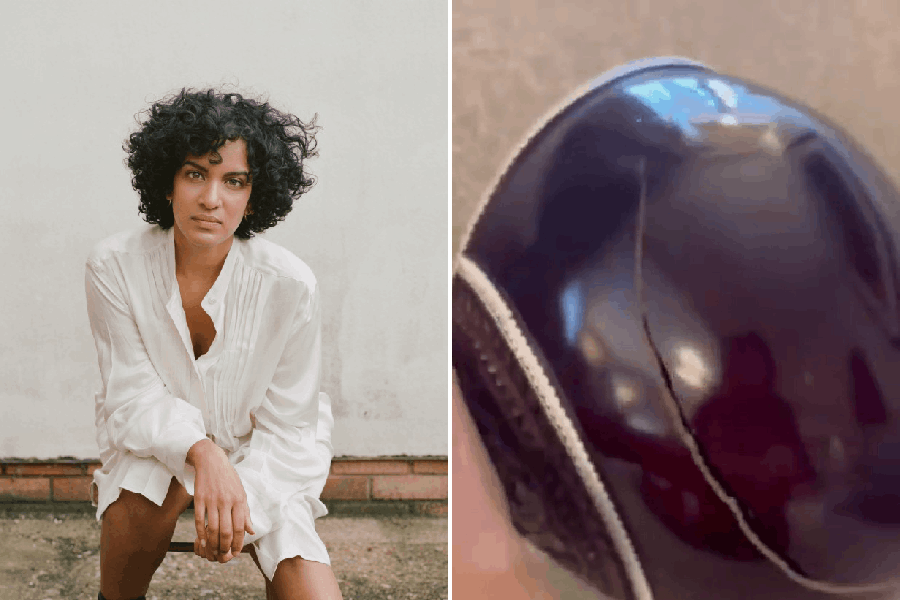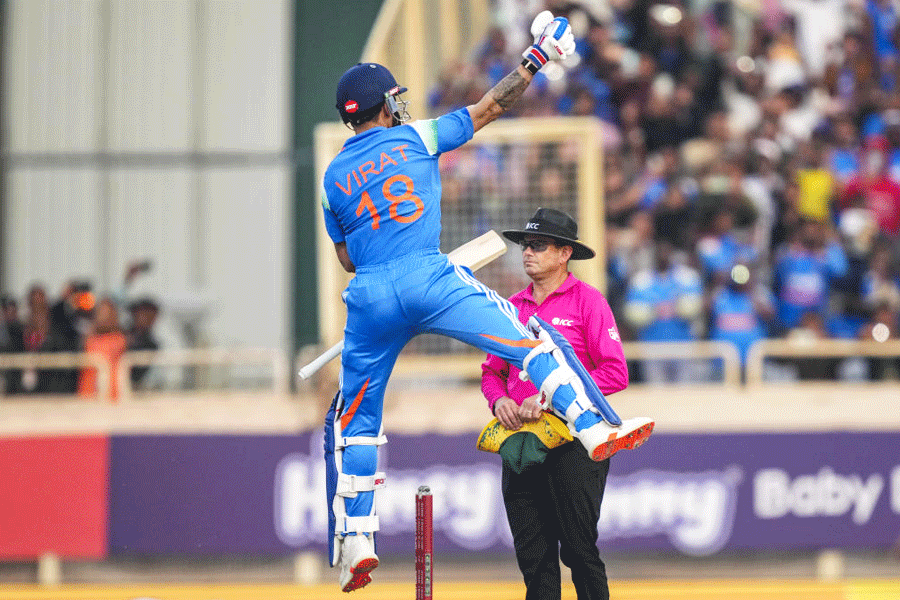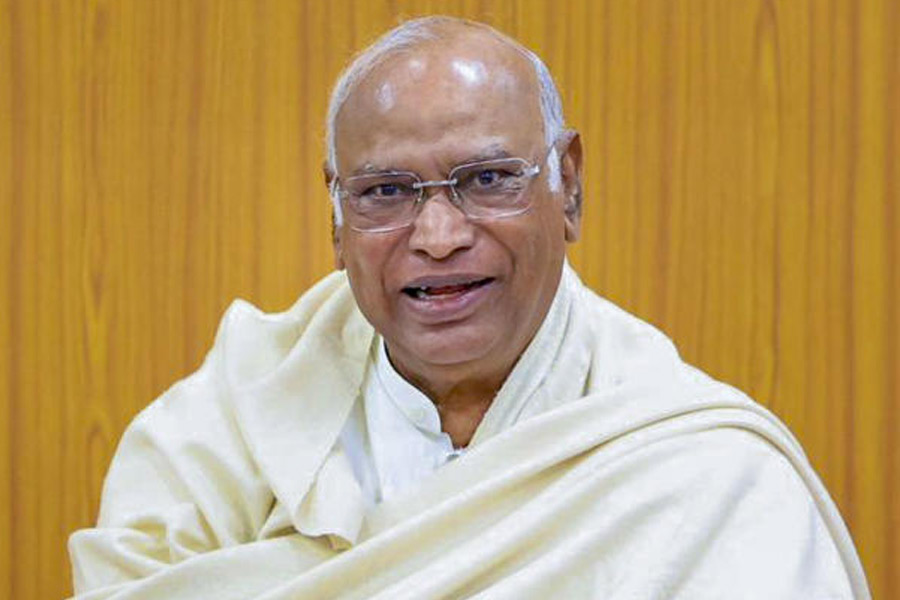Walking into Experimenter, Ballygunge Place to view Pushpakanthan Pakkiyarajah’s solo exhibition, No Race, No Colour, felt like stepping into the fictional world of The Last of Us in the lull after the storm in which the fungal apocalypse had already engulfed the world. Thick, richly textured mats of singed, mycelium-like sporal creatures seemed to have taken over the floors and the walls of the gallery. Yet, unlike in the dystopian OTT series, it was not the fungus that posed the danger. Rather, the fungal flora had clearly borne the brunt of the destructive nature of humans. Charred and frozen in shock, these once-living beings communicated a gruesome tale of war — Pakkiyarajah grew up as a minority in civil war-torn Sri Lanka, so the reference of the burnt landscape had an immediacy to it. But it also could well be the ground in Gaza or Ukraine that has been made barren by years of bombing and bloodshed.
They say mycelium has memory and can communicate danger. Pakkiyarajah’s sculptures encapsulated the memory of nature, communicating to viewers the destruction that war leaves in its wake. Take, for instance, the piece, Charred hyphal mat, bits of which were spread across several rooms of the gallery. The biggest of these — made of rope, wood dust, thread, wood glue, fluid matte medium, acrylic, emulsion, fishing net, wood preservative and automotive enamel — resembled a tumultuous moment of churn (picture). It was suspended from the skylight, like a dark cloud of detritus that hung ominously in the midst of a room otherwise flooded with light. In it were caught lives and structures that are uprooted and blown around in the storm of a war. It almost felt as if touching it would unpause the war, and the churn would resume.
In another room, the video installation, Straddling Ocean and Sky, begins in serenity and ends in suffocation. The artist transforms fish from free spirits into symbols of confinement, trapped between commerce and conflict. Religious and national motifs blur into a global anxiety, making this work both a lament and a sharp critique of modern captivity. Pakkiyarajah’s art is not merely about war; it is about what remains sentient after war has passed. His materials remember. His landscapes grieve. No Race, No Colour was thus both an indictment and a requiem — a reminder that even the ground, the air, the ocean carry the memory of what we destroy.
Between Ruin and Rebirth at the Ganges Art Gallery saw artists express their concerns about the imprints of the Anthropocene on the planet. Ishita Chakraborty mapped the environmental and the cultural crises facing the Sundarbans on nakshi kantha, while Ronan le Régent brought viewers face to face with the minutiae of nature in an effort to recall the little things being wiped out by the climate calamity. Ravi Agarwal’s photographs of the Yamuna confront the violence of urban ambition with unsettling clarity.
Paula Sengupta transformed the history of colonial plunder of the chintz fabric into an act of quiet defiance, where each etching was an effort to reclaim the chintz’s motifs from the Empire’s design. Jean Bonichon’s and Pierre Alexandre Lavielle’s luminous headdresses turned their wearers into beacons, transforming the landscape into a stage where identity flickers between belonging and absurdity. In Lachesis, Amaël Bougard weaves myth, technology, and ecology into a single trembling thread, mapping the tangled networks that bind the digital and the pastoral, the human and the more-than-human, into one shared fate. Olivier Chouteau’s etchings and sculptures treat debris as relics, reminding us that what is cast off today is already the archaeology of tomorrow.
Debasish Mukherjee’s work turns fabric into elegy, revealing the uneasy intimacy between consumption and the Earth that clothes us. Urmila Chouteau’s porcelain ecosystem hovers between beauty and mourning, its ghostly whiteness recalling coral death. Noémie Sauve’s drawings trace the unseen currents of life and landscape, revealing how geology, ecology, and memory intertwine in worlds that demand both attention and care.

